ChBE Department Update - Spring 2014
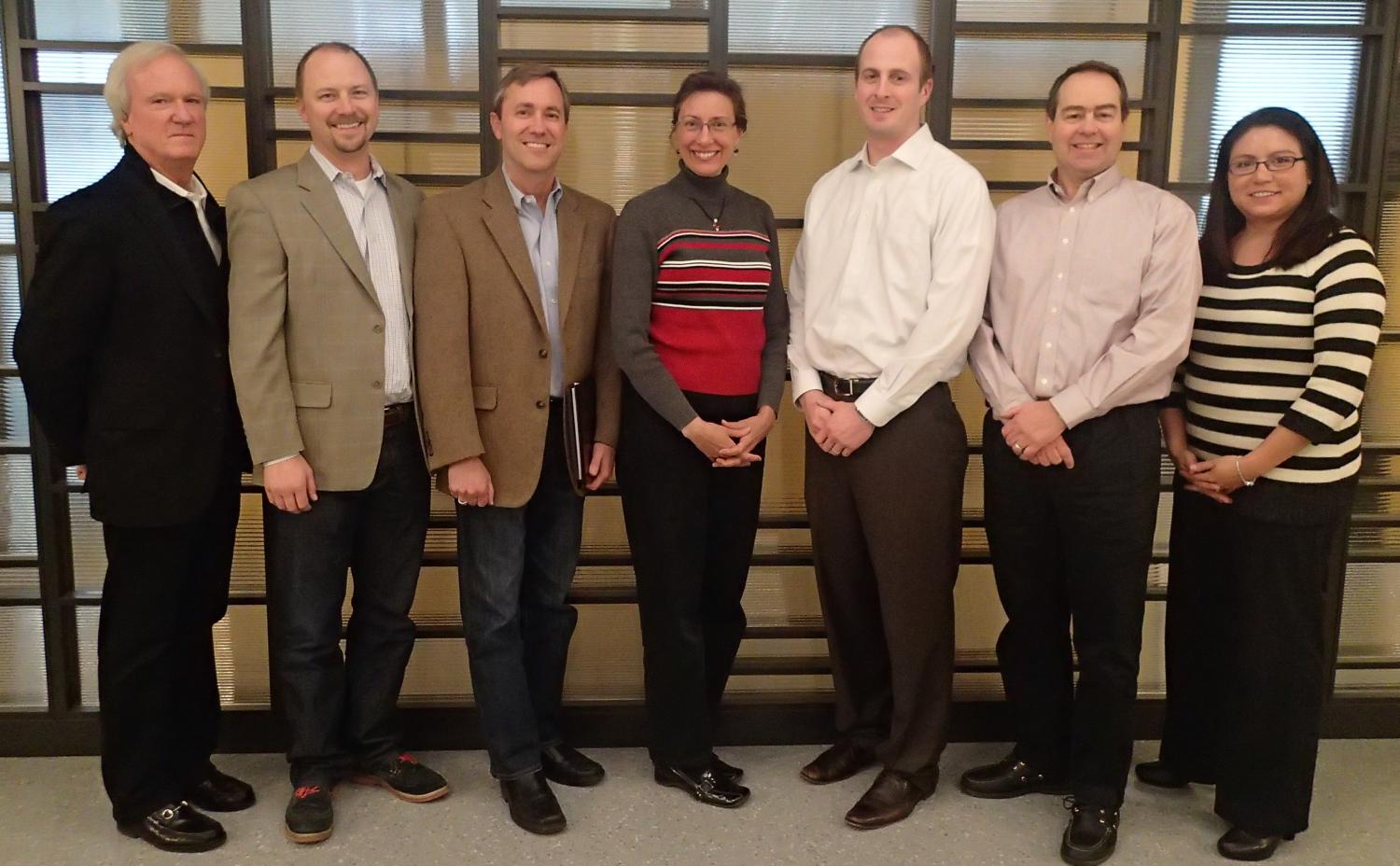 External Advisory Board To Strengthen ChBE Community
External Advisory Board To Strengthen ChBE Community

CU-Boulder's Department of Chemical and Biological Engineering (ChBE) has experienced a growth of student enrollment of approximately 75 percent since 2007, making it one of the top 10 largest chemical engineering departments in the nation on the basis of student enrollment. This growth brings exciting opportunities, but also significant challenges.
With another 50 percent growth in student enrollment expected by 2020, the department has enlisted the help of an External Advisory Board (EAB) to form a ChBE community that links alumni, current students, faculty, and staff for the mutual benefit of all.
The EAB is currently comprised of ChBE alumni from both the undergraduate and graduate programs who are now in leadership positions in companies spanning energy to pharmaceuticals. EAB members (pictured l-r) T. Scott Martin, Joe Poshusta, Bart Carpenter, Theresa Scholz, Chris Perkins, John Blakney III, and Dana Settell have generously contributed their time, unique skills, and perspectives to a variety of collaborative pursuits with ChBE faculty and staff.
During its 2013 meetings, the EAB critically considered the challenges faced by the ChBE department and concluded that the strong and active CU-ChBE community represented an incredibly powerful but largely untapped opportunity for students, alumni, faculty, and staff. Working together, the EAB and ChBE faculty developed an overall vision and plan to connect these constituents in a continuing partnership to support both the professional success of students and the long-term improvement of the ChBE department.
To achieve this community-oriented objective, strategies were developed involving student support, fundraising and alumni engagement.
>> Read about our student mentoring and 1904 Society initiatives
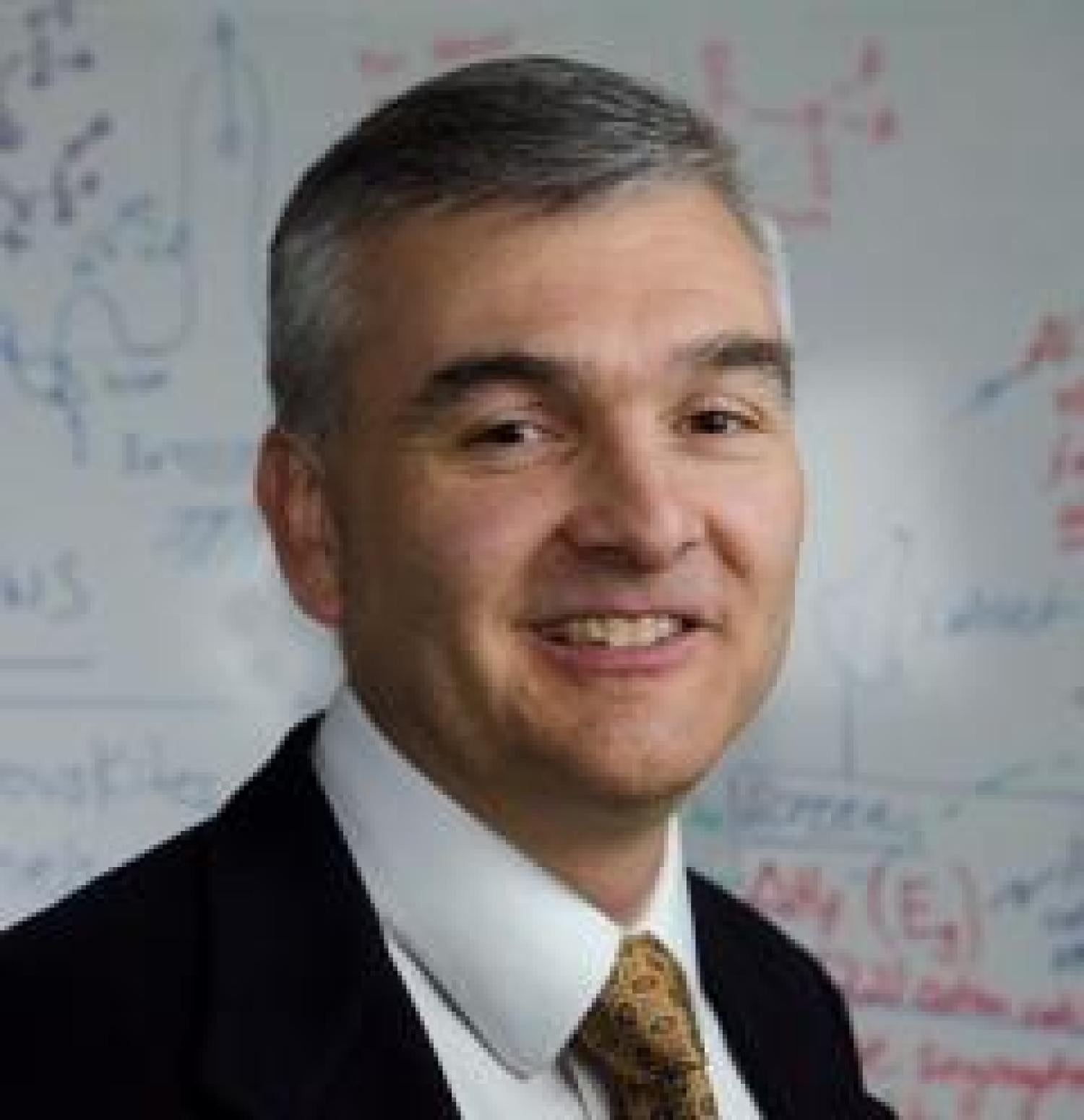 Computationally Designing Renewable Energy Solutions
Computationally Designing Renewable Energy Solutions

Biking down a steep mountain road on his way to work last August, ChBE Professor and Associate Chair Charles Musgrave collided with a truck on a sharp bend, breaking his neck, collarbone, and four ribs. The fact that he showed up to teach on the first day of classes three days after surgery surprised neither his colleagues nor his students.
"I was excited to get back to teaching and research," he admits.
Musgrave is passionate about his work, in particular using quantum mechanics for renewable energy applications.
"I have always been fascinated by quantum mechanics," he says. "It is one of the greatest scientific achievements of the 20th century and can be an incredibly valuable tool in uncovering detailed underlying molecular processes."
Trained as a materials scientist, Musgrave has a strong background in chemistry and physics, which allows him to approach renewable energy challenges from a unique perspective.
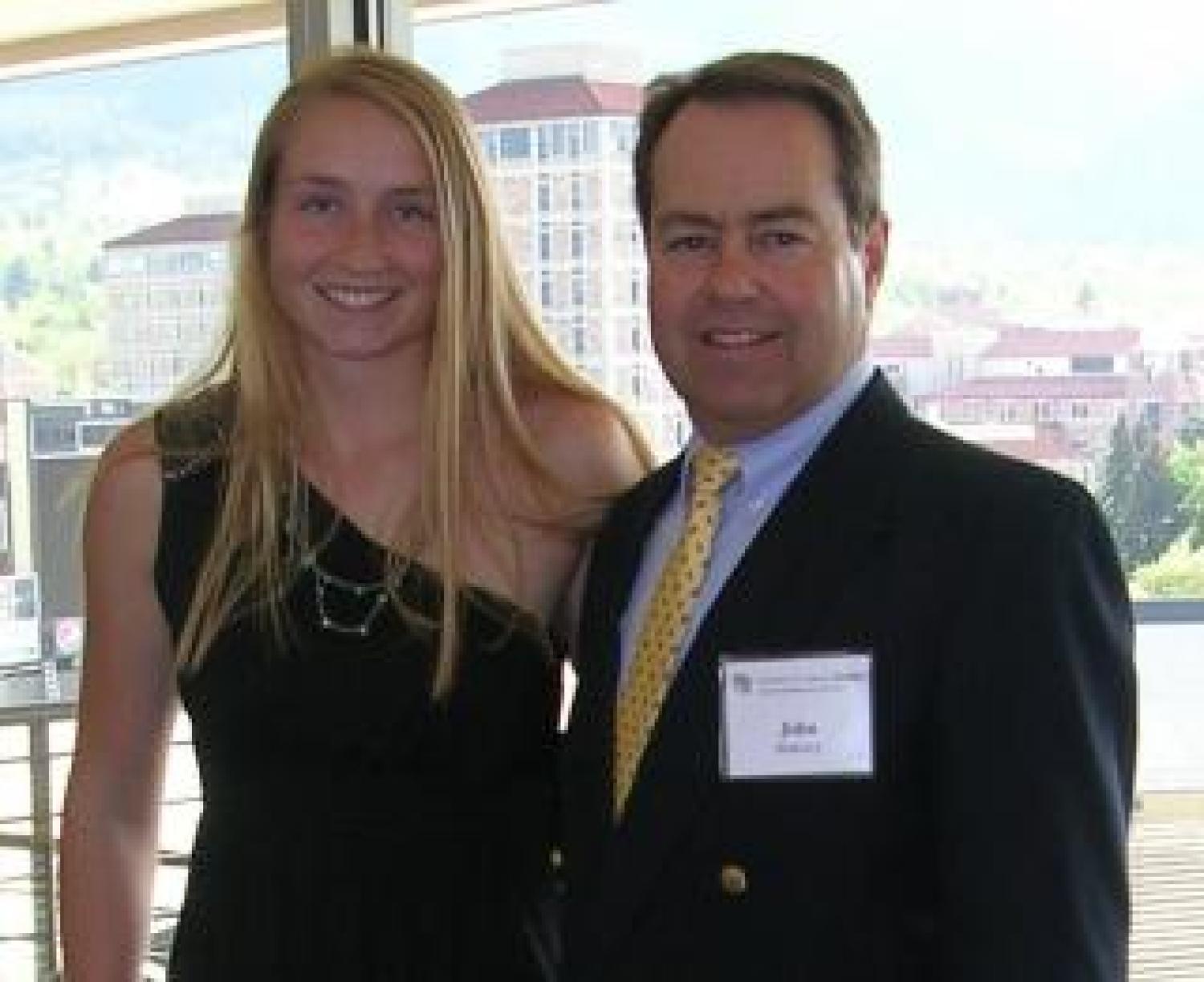 Where Are They Now? The Blakney Family
Where Are They Now? The Blakney Family

When the late John Blakney Jr. enrolled in CU-Boulder's ChBE Department in 1950, he started a family tradition.
Four Blakney family members spanning three generations have obtained degrees from the department, including patriarch John Blakney Jr.(ChemEngr'54 and BU'54); his son John Blakney III (ChemEngr'81) and daughter Susan Blakney (ChemEngr'85); and most recently John III's daughter Anna Blakney (ChemBioEngr'12), pictured here with John III.
Both John III and Susan were encouraged by their father to come to CU.
"Dad loved it and it was a way for me to go where the skiing was better than New Jersey!" says John III. "Also, the fact that CU balances a very high quality education with so many fun outdoor activities really sets it apart. I have great memories of walking across campus on a sunny day after a snowstorm, concerts in Macky and Folsom, and eating at The Sink, formerly Herbie's, during my dad's visits."
>> Read more thoughts on CU and what the Blakney family members are doing now
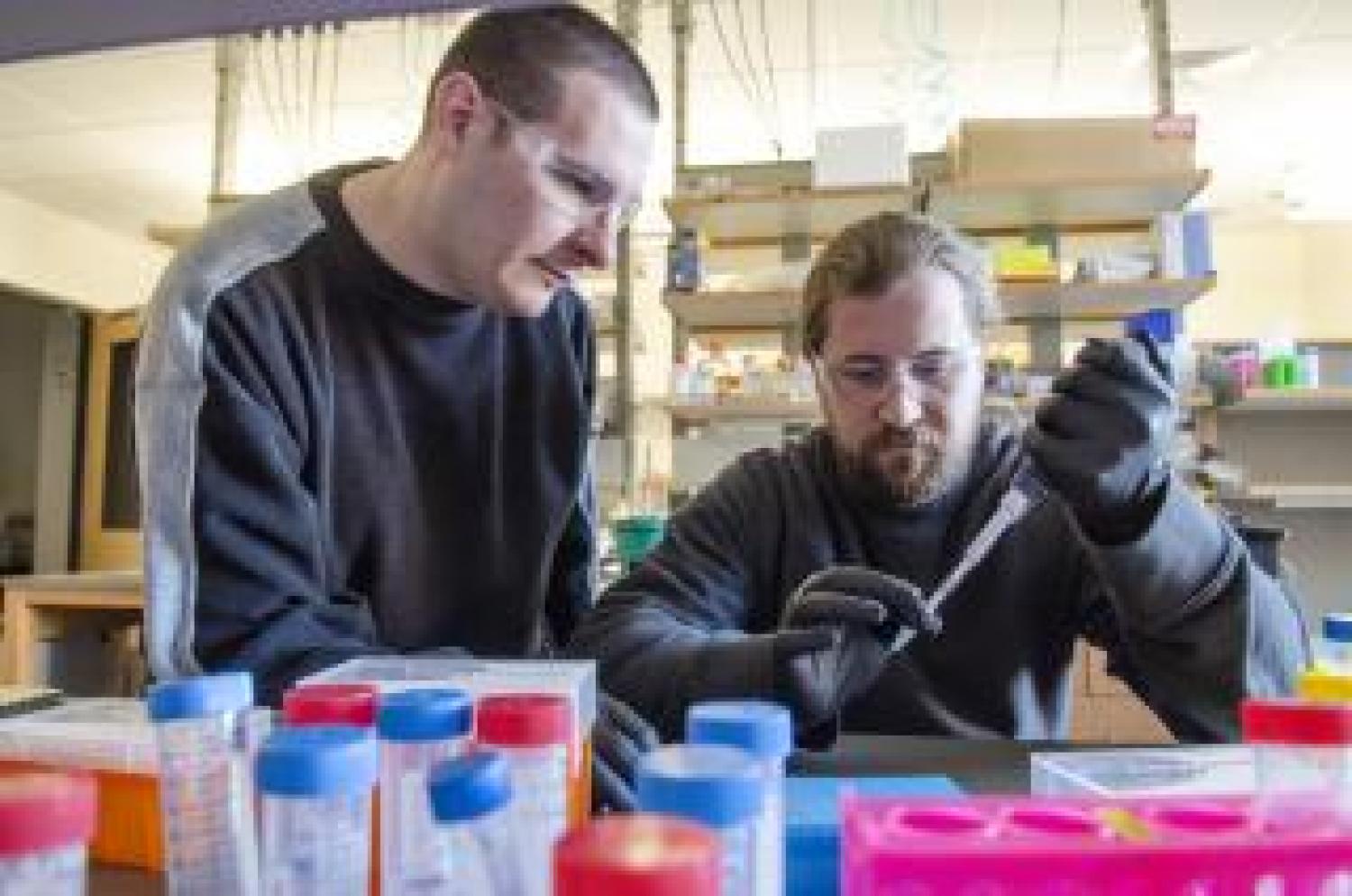 ChBE Undergrads Win at International Synthetic Biology Competition
ChBE Undergrads Win at International Synthetic Biology Competition

The CU-Boulder iGEM team had a goal of making synthetic biology more accessible and affordable. Surpassing their hopes, their project on new low-cost methods of enzyme purification won multiple honors at the iGEM North American Regional Competition in Toronto and qualified them for the top synthetic biology competition in the world.
iGEM, or Internationally Genetically Engineered Machine, is an international competition launched in 2003 wherein student teams are given a kit of biological parts such as promoters or specific genes. Using these parts as well as those of their own design, teams must create biological systems that operate in living cells.
"iGEM encourages high-risk, high-reward projects; documenting all of your results regardless of success; and freely sharing information," says ChBE student Phil Jensen. "This is a good template for how science ought to be investigated."
The CU-Boulder team of 15 students, which included ChBE undergraduates Jensen and Bill Heymann (pictured r-l), created constructs and purification methods to isolate and produce the restriction enzyme EcoRI.
"As the project progressed, we realized that the existing protocols and documentation could be vastly improved," says Heymann. "By the end we created restriction enzymes, protein purification systems, miniprep kits, and many new protocols."
>> Read more about their awards and how they put their ChBE education to practical use
Class Notes
Let us know what you've been up to! Send us an alumni update using our online form.
Curt Hampton (MS ChemEngr'96) became the Senior Business Systems Manager in the Clinical Trials Office at the Huntsman Cancer Institute, an NCI-designated Cancer Center, in Salt Lake City this past fall. He implements, manages, and trains the software applications that track the clinical trial data in an effort to find cures for cancers.
Kyle Lampe (PhD ChemEngr'09) began his new position in January at the University of Virginia as an assistant professor in chemical engineering. After earning his PhD at CU-Boulder with Melissa Mahoney, he worked as a postdoc at Stanford University in the Department of Materials Science and Engineering with Sarah Heilshorn, where he engineered protein biomaterials for neural tissue engineering. His new lab at UVa will focus on tissue engineering, biomaterials, and cellular redox state to treat diseases and disorders within the human central nervous system.
Will Brewer (ChemEngr'12) has applied to grad schools across the nation to pursue a doctorate in material science. Prior to this, he spent almost two years at Micron Technology. His time at Micron provided him both a great understanding of the semiconductor industry and clarity on his career goals. He and his wife recently celebrated their one-year wedding anniversary in San Francisco.
Faculty, Staff & Student Awards
Professor John Falconer was honored with the Michigan State University 2013 Johansen-Crosby Lectureship recognizing development of educational initiatives.
Assistant Professor Prashant Nagpal received an NSF CAREER Award.
Professor Rich Noble received the Institute of Chemical Engineers (IChemE) 2013 Innovator of the Year Award at the IChemE Awards and Annual Dinner in the United Kingdom.
Department Chair Dan Schwartz was elected to the Chair line of the American Chemical Society's Division of Colloid and Surface Chemistry. He will serve as vice chair in 2014, chair elect in 2015, division chair in 2016, and past chair in 2017.
Professor Al Weimer gave the Keynote Friedlander Lecture at the 2013 Annual Meeting of the American Association for Aerosol Research.
Stansbury group graduate student Alan Aguirre was chosen as the AIChE Featured Young Professional (YP) for the month of November.
Graduate student Robert Elder, a member of the Jayaraman group, received a 2013 AIChE Computational Molecular Science and Engineering Forum (CoMSEF) annual Graduate Student Award.
Chern-Hooi Lim, a graduate student under the direction of Professor Charles Musgrave, was one of five students nationwide to win a fall 2013 American Chemical Society (ACS) Chemical Computing Group Excellence Award for Graduate Students.
Undergraduates Kayla Weston and Rachel Viger and graduate student Staci Van Norman, all members of the Weimer group, won poster contest awards at the AIChE 2013 Annual Meeting in San Francisco. Weston took first place in the Materials Engineering and Sciences Division for her poster "A Method for Clean H2 Generation from Solar Heat and Water." Viger took third place in the Computing, Simulation and Process Control Division for her poster "Theoretical Model of a Thermochemical Metal Oxide Cycle for Hydrogen Production." Van Norman took second place in the Particle Technology Forum Graduate Competition for her poster "Radically New Deposition of Co Particles."
Undergraduate Thomas Lynn was named to the Theta Tau Educational Foundation's inaugural All-Academic Team.
Letter from Chair Dan Schwartz
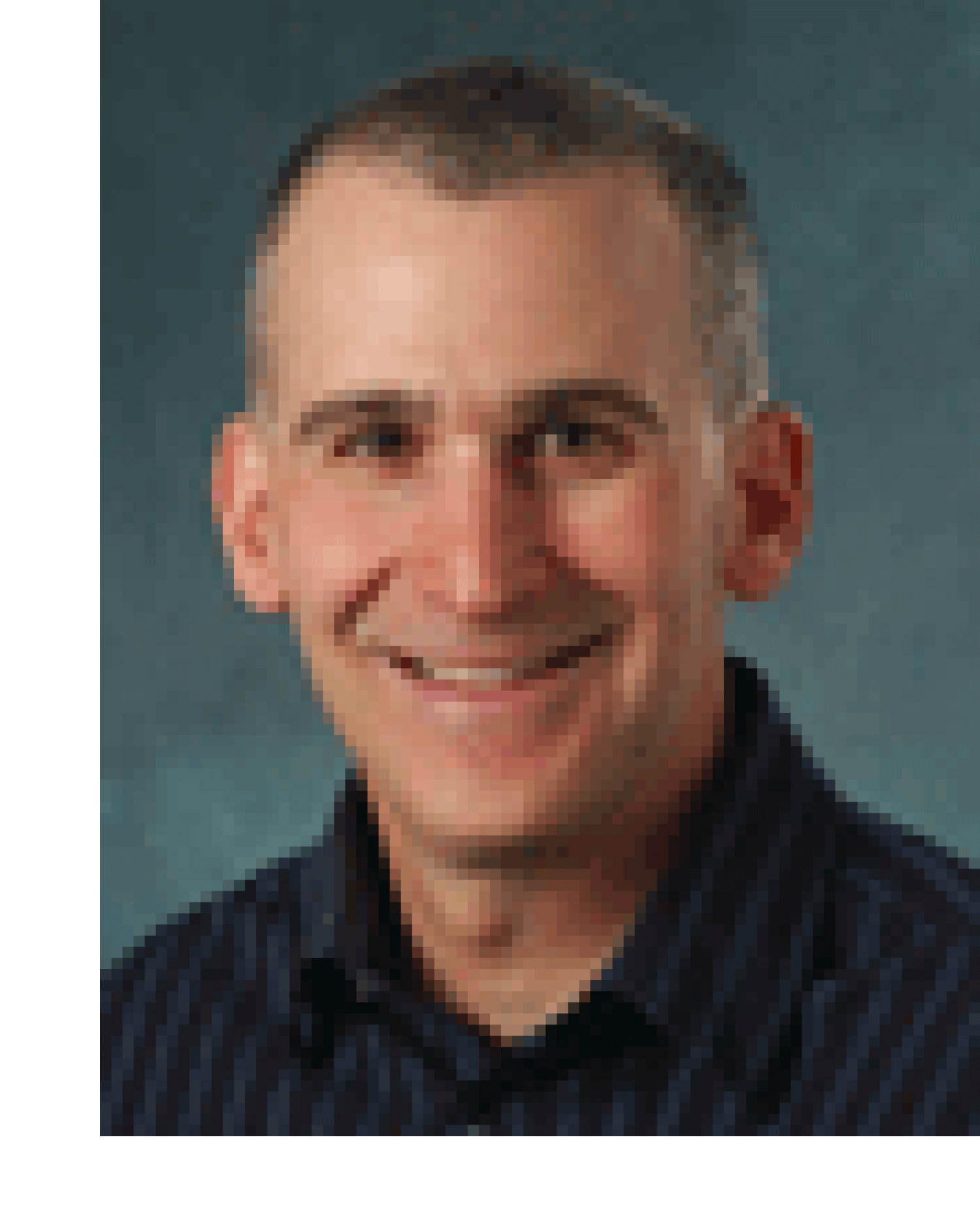
Our undergraduate enrollment has reached record proportions, and there are projections that the growth will continue into the near future. Not only are we now the second largest department in the college (behind only Mechanical Engineering), we are also amongst the Top 10 largest departments in the country based on undergraduate enrollment. While the increase in our faculty numbers has lagged behind that of our students, we are pursuing an aggressive strategy for faculty growth, and the next few months will be filled with the visits of prospective faculty members. We hope to have some exciting news on that front by this summer.
Over the last year, I have written about our Pillars of Excellence philosophy toward research in the department and announced two research symposia focusing on departmental research in Energy and Bioengineering. Following on the heels of these successful events, we are planning a third symposium in the topic of Materials Science and Engineering, which is slated for Thursday, March 13. Members of the faculty, including Chris Bowman, Arthi Jayaraman, Charles Musgrave, and myself, will discuss exciting research involving the preparation, characterization, and applications of novel materials. We expect that many of our current students will attend, and we hope to see many alumni and other members of the community.
Dan Schwartz
Department Chair
Upcoming Events
Tues., Feb. 18 from 6:00 p.m.-8:45 p.m. in JSCBB Lobby: AIChE Rocky Mountain Section Dinner. Featuring a talk by Al Weimer and a building tour. RSVP: Brian.Olson@ch2m.com.
Thurs., Mar. 13 from 5:30 p.m.-8:00 p.m. in JSCBB Lobby: Spring 2014 ChBE Research Symposium and Networking Event. The focus this semester is Materials Science and Engineering. Open to alumni, professionals, graduate researchers, and both CHEN and CBEN undergraduates. RSVP: wendy.young@colorado.edu.
Thurs., Apr. 17 from 9:00 a.m.-3:00p.m. in UMC: Just in Time Hiring and Internship Fair.
More ChBE events >
More alumni events >
In the Community
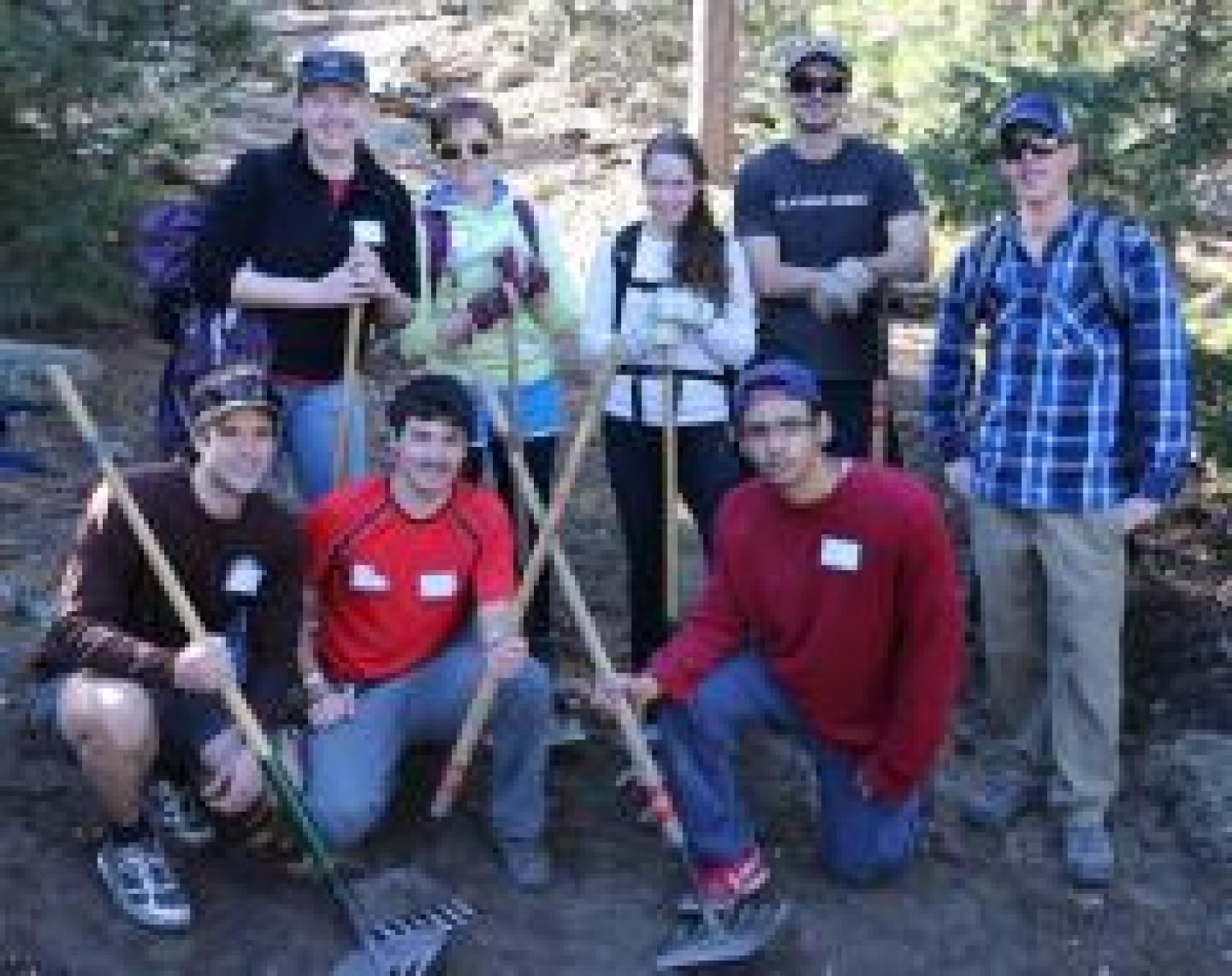
Instructor Charlie Nuttelman (bottom left) and Senior Design students volunteer for trail work at Walker Ranch.
In the News
CU Chemical and Biological Engineering: Highlights of 2013
Weimer Awarded $3.6 Million for New Way to Produce Magnesium for Auto Parts
Medlin and Schwartz's Biorefining Catalysis Work Published in Nature Communications
Bowman and Stansbury Receive NIH Grants for Dental Composite Research
Nanoly Bioscience to Develop CU-Boulder Vaccine Stabilization Technology
Rich Noble Gives Colorado Public Radio Interview on Ionic Liquid-Based Fabrics
Research on Protein Structure and Interfacial Dynamics on Biomaterial Surfaces Published in PNAS
Stoykovich's Patterning Research Featured on Cover of ACS Macro Letters
Nagpal Group Demonstrates Devices that Convert Invisible Infrared Radiation, or "Heat," Efficiently into Visible Light

